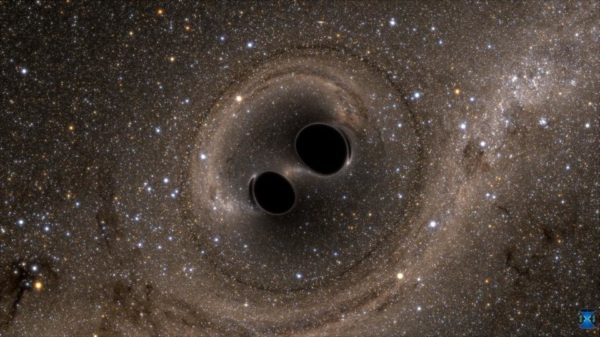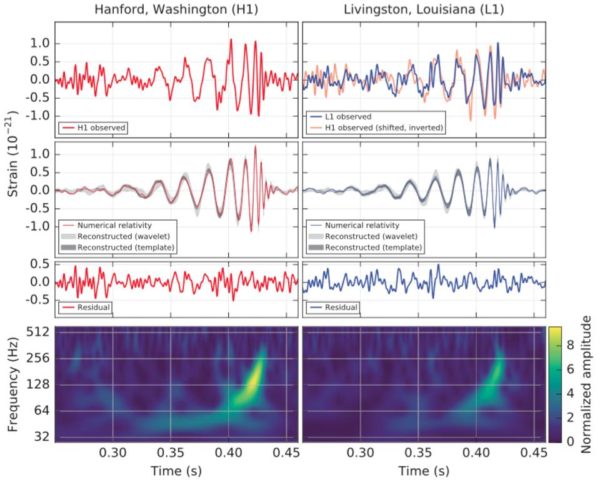"We have never observed infinity in nature. Whenever you have infinities in a theory, that's where the theory fails as a description of nature. And if space was born in the Big Bang, yet is infinite now, we are forced to believe that it's instantaneously, infinitely big. It seems absurd." -Janna Levin
You’ve likely heard that there’s no sound in space; that sound needs a medium to travel through, and in the vacuum of space, there is none. That’s true... up to a point. If you were only a few light years away from a star, stellar remnant, black hole, or even a supernova, you’d have no way to hear, feel, or otherwise directly measure the pressure waves from those objects.
 Two merging black holes. Image credit: SXS, the Simulating eXtreme Spacetimes (SXS) project (http://www.black-holes.org).
Two merging black holes. Image credit: SXS, the Simulating eXtreme Spacetimes (SXS) project (http://www.black-holes.org).
But they emit another kind of wave that can be interpreted as sounds, if you listen correctly: gravitational waves. These waves are so powerful, that in the very first event we ever detected, the black hole-black hole merger we saw outshone, in terms of energy, all of the stars in the observable Universe combined. There really is sound in space, as long as you know how to listen for it properly.
 The gravitational wave signal from the first pair of detected, merging black holes from the LIGO collaboration. Although a large amount of information can be extracted, no images or the presence/absence of an event horizon can be gleaned. Image credit: B. P. Abbott et al. (LIGO Scientific Collaboration and Virgo Collaboration).
The gravitational wave signal from the first pair of detected, merging black holes from the LIGO collaboration. Although a large amount of information can be extracted, no images or the presence/absence of an event horizon can be gleaned. Image credit: B. P. Abbott et al. (LIGO Scientific Collaboration and Virgo Collaboration).
Come learn about it, and catch a live event, live-blogged by me, this evening!

From the post, "it would take 10^150 years for Earth to spiral into the Sun".
With calculations this extreme, I wonder if the effects of expanding space (dark energy, "pushing" the Earth away from the Sun) were included. And if so, how do they compare in magnitude?